The article delineates ten pivotal trends that are set to shape the food and beverage hospitality industry by 2025. Among these trends are:
These developments reflect an escalating consumer demand for healthier, eco-friendly options and enriched dining experiences. This shift is propelled by evolving preferences and technological advancements that hospitality businesses must adopt to sustain their competitive edge.
As the food and beverage hospitality industry prepares for 2025, a transformative wave of trends is poised to reshape dining experiences and operational strategies. The rise of plant-based menus, catering to health-conscious consumers, coupled with the growing demand for sustainability and local sourcing, presents establishments with unique opportunities to enhance their appeal and profitability. However, how can hospitality businesses effectively navigate these evolving expectations while maintaining a competitive edge? This article explores ten pivotal trends that will define the future of food and beverage hospitality, offering insights and actionable strategies for success in an ever-changing landscape.
Lights On stands at the forefront of transforming revenue management in the food and beverage hospitality industry. By leveraging data analytics and market insights, the company empowers establishments to optimize pricing strategies and enhance occupancy rates. As your strategic revenue management partner, Lights On is equipped to assist with a variety of projects, including:
This allows you to concentrate on high-level strategy. Their tailored approach ensures that clients in the food and beverage hospitality sector can effectively , ultimately leading to increased profitability and enhanced guest experiences. Furthermore, Lights On emphasizes effective hotel marketing strategies, presenting three proven approaches to boost bookings and revenue. These insights are essential as the hospitality industry continues to evolve. Such innovative solutions are vital for addressing the ever-changing buyer needs and market conditions.

The growth of plant-based eating signifies a substantial shift in public preferences towards healthier and more sustainable food options. By 2025, nearly 53% of U.S. patrons will actively seek plant-based choices when dining out, reflecting an increasing interest that extends beyond vegetarians and vegans to include flexitarians aiming to reduce meat consumption. Furthermore, by 2030, 75% of consumers anticipate that plant-based food will be widely available in most restaurants, indicating a robust trend towards mainstream acceptance. This trajectory is expected to continue, with plant-based cuisine becoming a standard offering across various eateries by 2035.
Restaurants and hotels are progressively incorporating plant-based dishes into their menus, recognizing the opportunity to engage a wider audience. By 2026, U.S. National Parks plan to showcase 50% plant-based menus, demonstrating a commitment to sustainability and health-conscious dining. Additionally, plant-based meat burgers are projected to surpass veggie burgers in popularity by 2025, further illustrating consumer preferences within the plant-based sector. To leverage this trend, food and beverage hospitality businesses should adopt targeted marketing strategies that emphasize their plant-based offerings, utilizing social media and influencer partnerships to enhance visibility and attract a diverse clientele.
Effective marketing strategies, such as collaborations with reputable brands and time-sensitive promotions, can stimulate trial and innovation within the food and beverage hospitality sector. With the global market for projected to reach USD 10 billion by 2025, restaurants that embrace this trend can elevate their brand image and appeal to health-conscious consumers. By focusing on nutritional transparency and innovative presentations, establishments can create memorable culinary experiences that resonate with today's eco-conscious patrons. Moreover, the presence of plant-based foods in U.S. restaurants has surged to 48.4%, with a 62% increase in plant-based alternatives on menus since 2012, underscoring the growing integration of these options in the culinary landscape. However, challenges such as concerns about taste and affordability persist, which restaurants must address to foster broader adoption of plant-based meals.
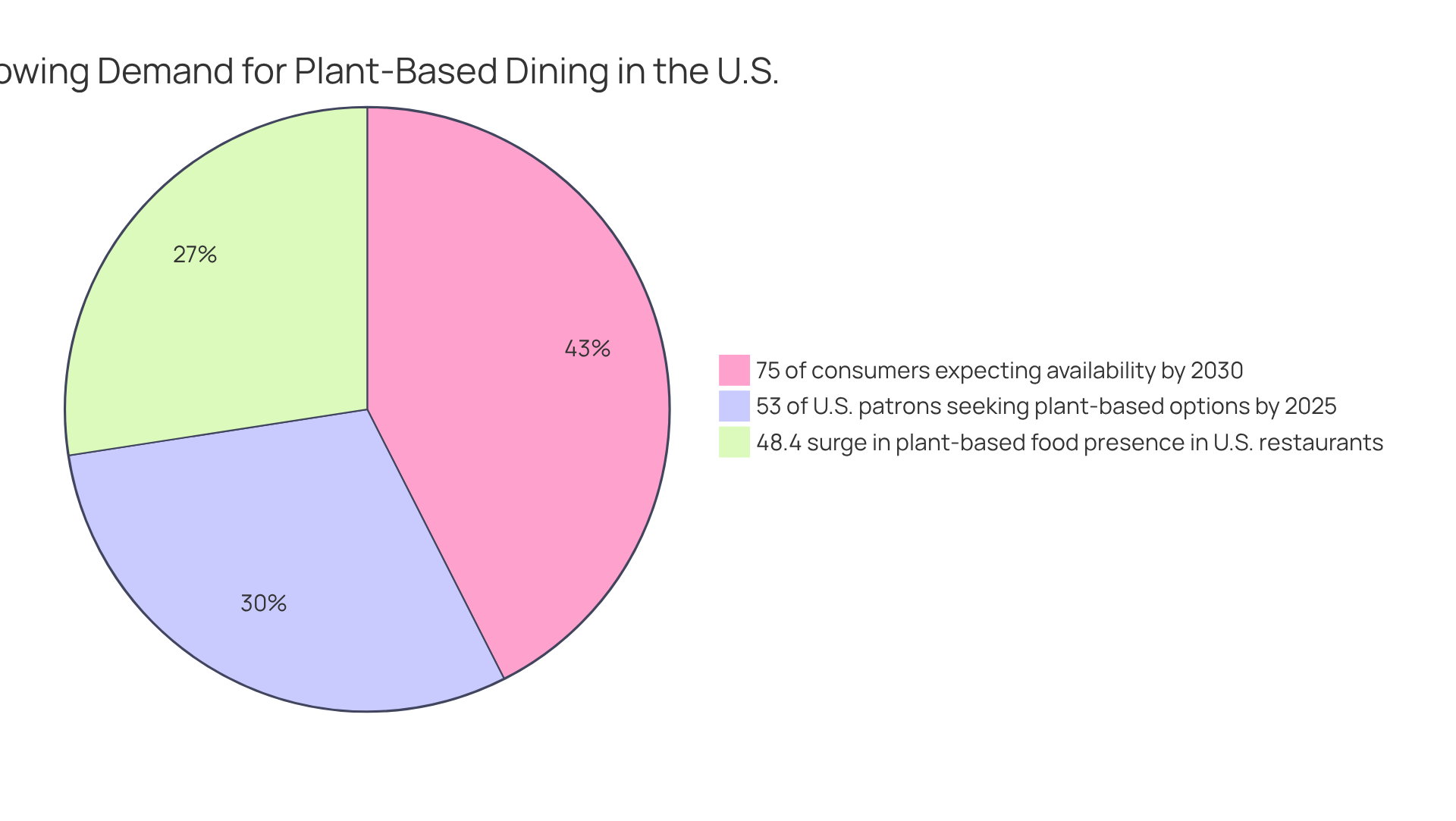
Sustainable sourcing has become a crucial factor for consumers when choosing dining establishments. In 2025, a remarkable 78% of diners favor restaurants that prioritize locally sourced ingredients, highlighting the growing demand for sustainability. By concentrating on eco-friendly options, hospitality businesses not only reduce their carbon footprint but also strengthen local economies. This commitment to sustainability can enhance brand reputation and foster client loyalty, especially when businesses effectively communicate their eco-friendly practices through targeted marketing strategies.
Lights On is poised to assist restaurants in maximizing their reach by leveraging both paid and free exposure, ensuring a unified brand voice across all digital assets, and elevating advertising quality to position them ahead of the competition. Furthermore, restaurants that implement sustainable sourcing practices are experiencing a positive impact on their sales, with studies indicating that eco-friendly initiatives can drive revenue growth by as much as 5-9%.
To thrive in a competitive market, it is imperative for restaurants to embrace and capitalize on strategic marketing efforts. Contact Lights On today to explore how we can support you in enhancing your marketing strategies and boosting client loyalty.

Technology is revolutionizing the dining experience, with innovations such as , contactless payments, and digital menus at the forefront. Hospitality businesses that adopt these tech-driven solutions significantly enhance customer convenience and satisfaction. Carlos J. Amespil, an F&B Operations Consultant, emphasizes, "The incorporation of technology in restaurants is no longer merely a trend; it’s evolving into an essential aspect of how establishments attract and retain guests."
Furthermore, innovations like augmented reality menus and tailored dining experiences are gaining traction, allowing establishments to distinguish themselves in a competitive landscape. A report indicates that the AI market in hospitality is projected to reach USD 8,120 million by 2033, underscoring the growing significance of these technologies.
As patrons increasingly seek meaningful and engaging culinary experiences, the integration of advanced technologies becomes imperative. By effectively showcasing these innovations, businesses can draw in tech-savvy patrons and enhance overall guest satisfaction.
Looking ahead to 2025, the focus will shift towards developing immersive environments that blend quality, sustainability, and technology, ensuring that culinary experiences meet the expectations of the modern consumer.
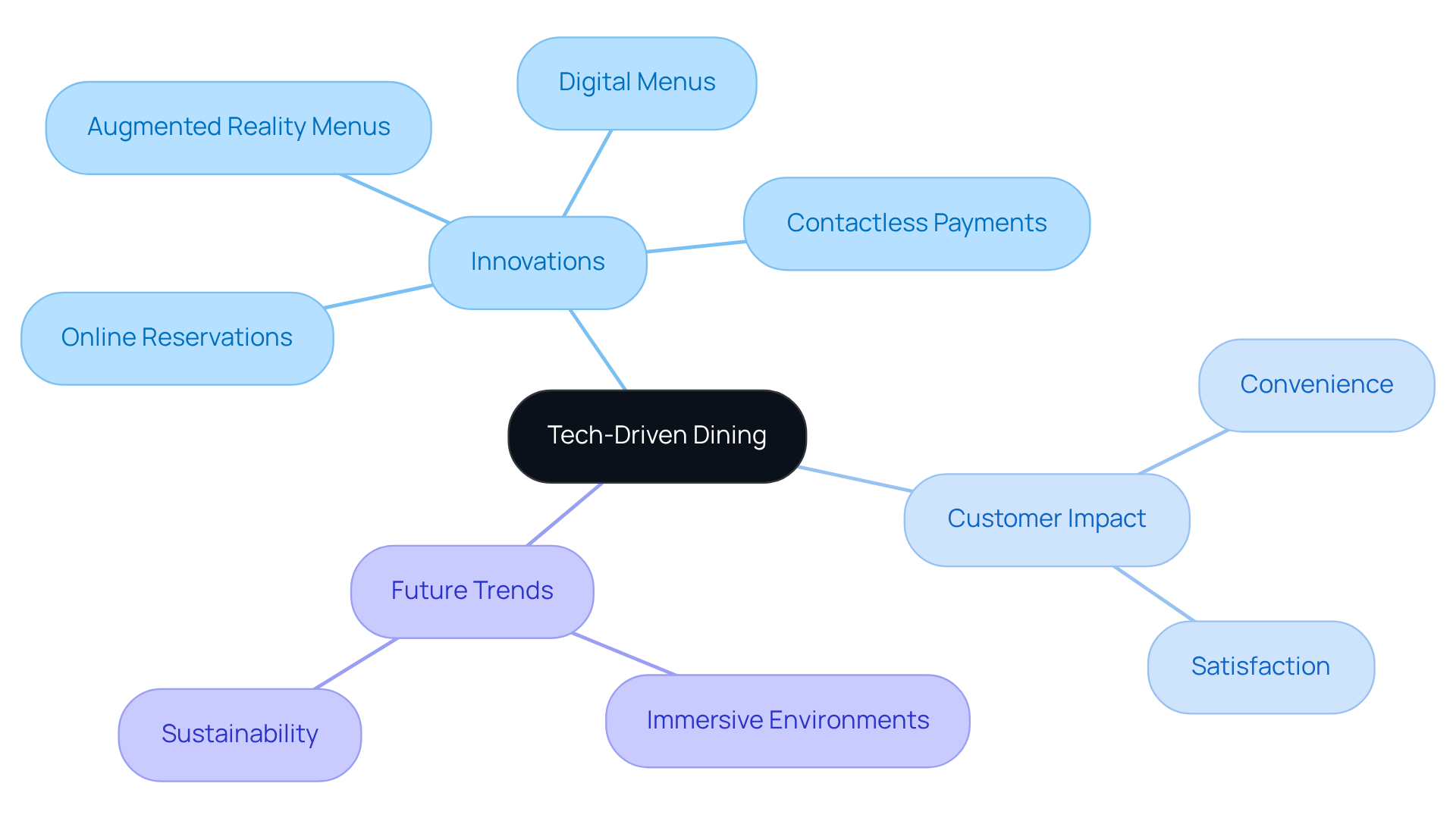
Experiential cuisine transcends traditional meal offerings by crafting memorable moments that resonate with guests. This trend encompasses unique experiences such as:
All designed to engage diners on a deeper level. By prioritizing the overall experience, hospitality enterprises can foster stronger connections with their clients, resulting in enhanced loyalty and return visits. Effective marketing strategies that highlight these distinctive experiences can draw a diverse audience eager for more than just a meal.
Insights from hospitality leaders highlight the significance of crafting unforgettable culinary experiences. Will Guidara, a prominent restaurateur, emphasizes the need to , stating, "Hospitality is about making people feel seen and treating them as unique individuals." Case studies show that restaurants employing experiential meal strategies have experienced notable increases in customer retention and revenue. In fact, statistics indicate that 91% of diners value personalized loyalty programs, with half considering them extremely valuable, showcasing the demand for tailored experiences.
As we approach 2025, trends in experiential cuisine are anticipated to develop further, with an increasing focus on sustainability and local sourcing. Restaurants that align their offerings with these values are likely to attract health-conscious diners and enhance their brand loyalty. The popularity of experiential meals continues to rise, making it a crucial focus for enterprises in food and beverage hospitality aiming to thrive in a competitive landscape.
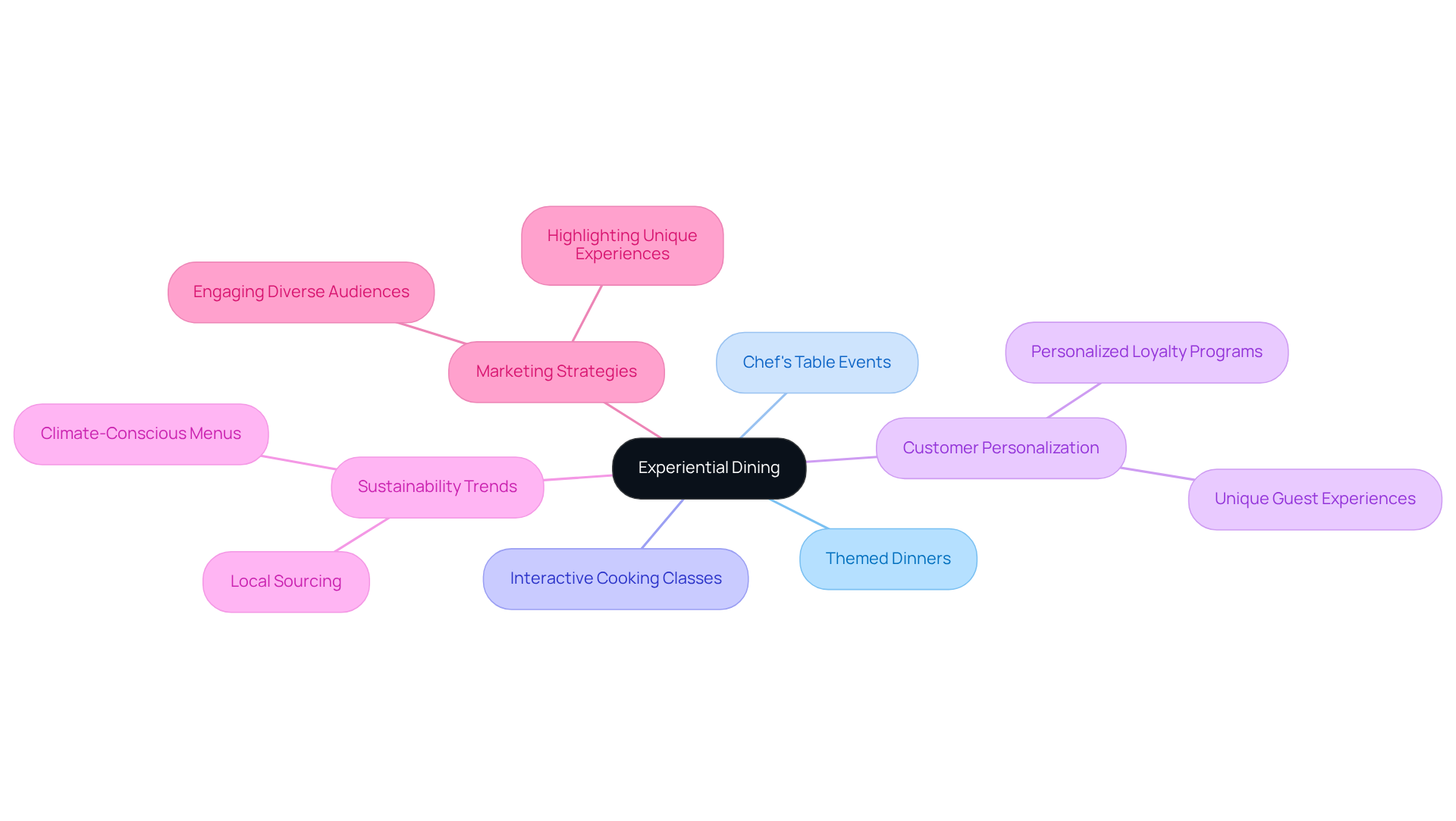
In light of the increasing health consciousness among patrons, hospitality enterprises are strategically crafting menus that emphasize nutritional value. This trend incorporates:
These efforts effectively cater to a demographic that in their dining choices. Notably, statistics reveal that:
This underscores the financial incentive for restaurants to focus on health-oriented menu selections. By aligning menu offerings with these consumer preferences, establishments can significantly enhance their appeal and operational success in 2025.
Additionally, the evolving definition of 'healthy' diets, which now includes diverse options such as plant-based and gluten-free selections, reflects changing public expectations. By ensuring transparency in ingredient labeling, restaurants can effectively accommodate dietary restrictions and preferences, thereby fostering brand loyalty and enhancing customer satisfaction.
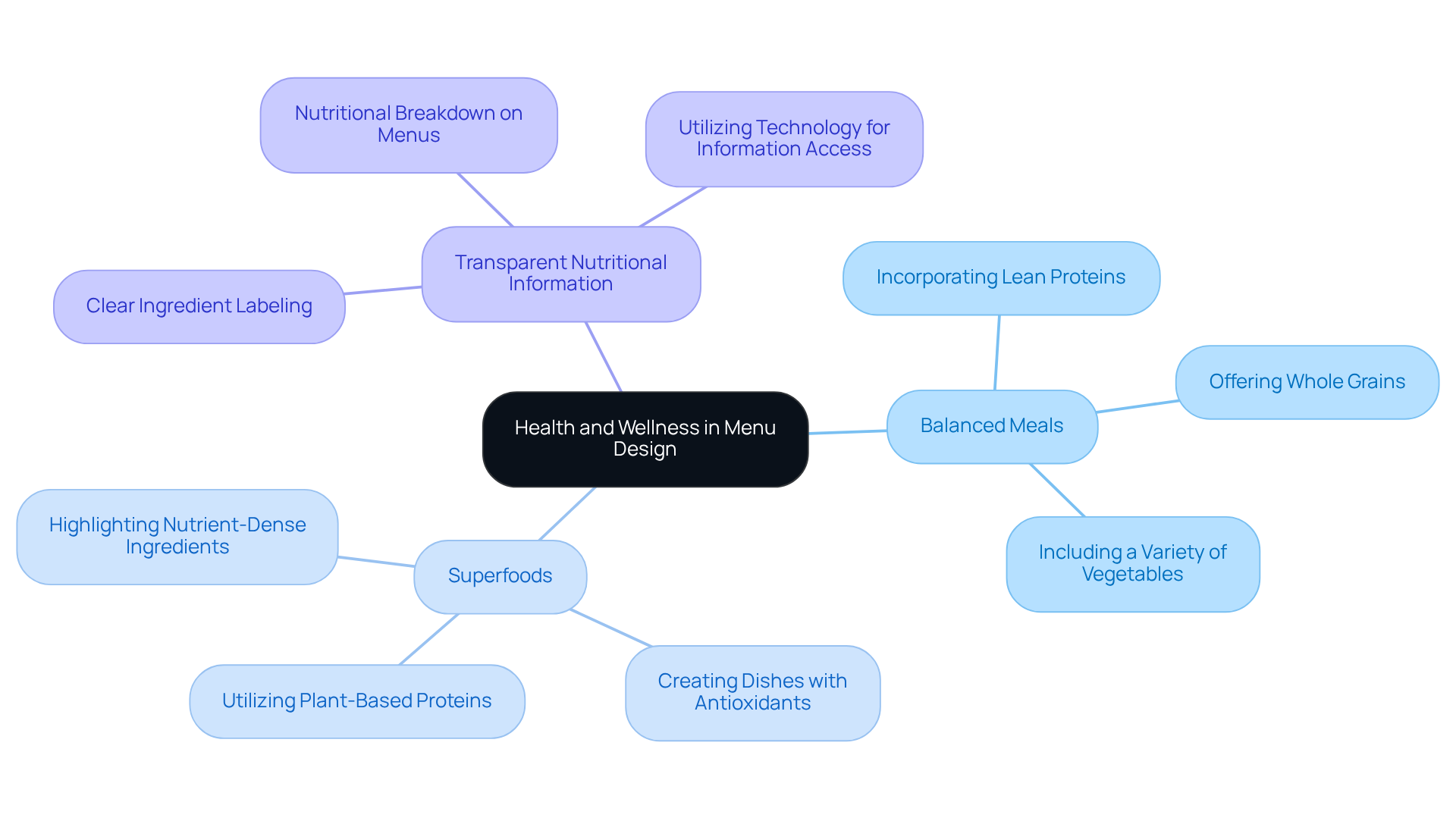
Local sourcing is increasingly recognized as a vital strategy as consumers crave authentic culinary experiences that embody regional flavors. By collaborating with local farmers and artisans, hospitality businesses can craft menus that not only highlight seasonal ingredients but also celebrate unique culinary traditions. This approach not only strengthens the local economy but also draws in patrons who prioritize genuine and . Furthermore, emphasizing local sourcing in marketing campaigns can significantly enhance brand image and foster a loyal customer base.
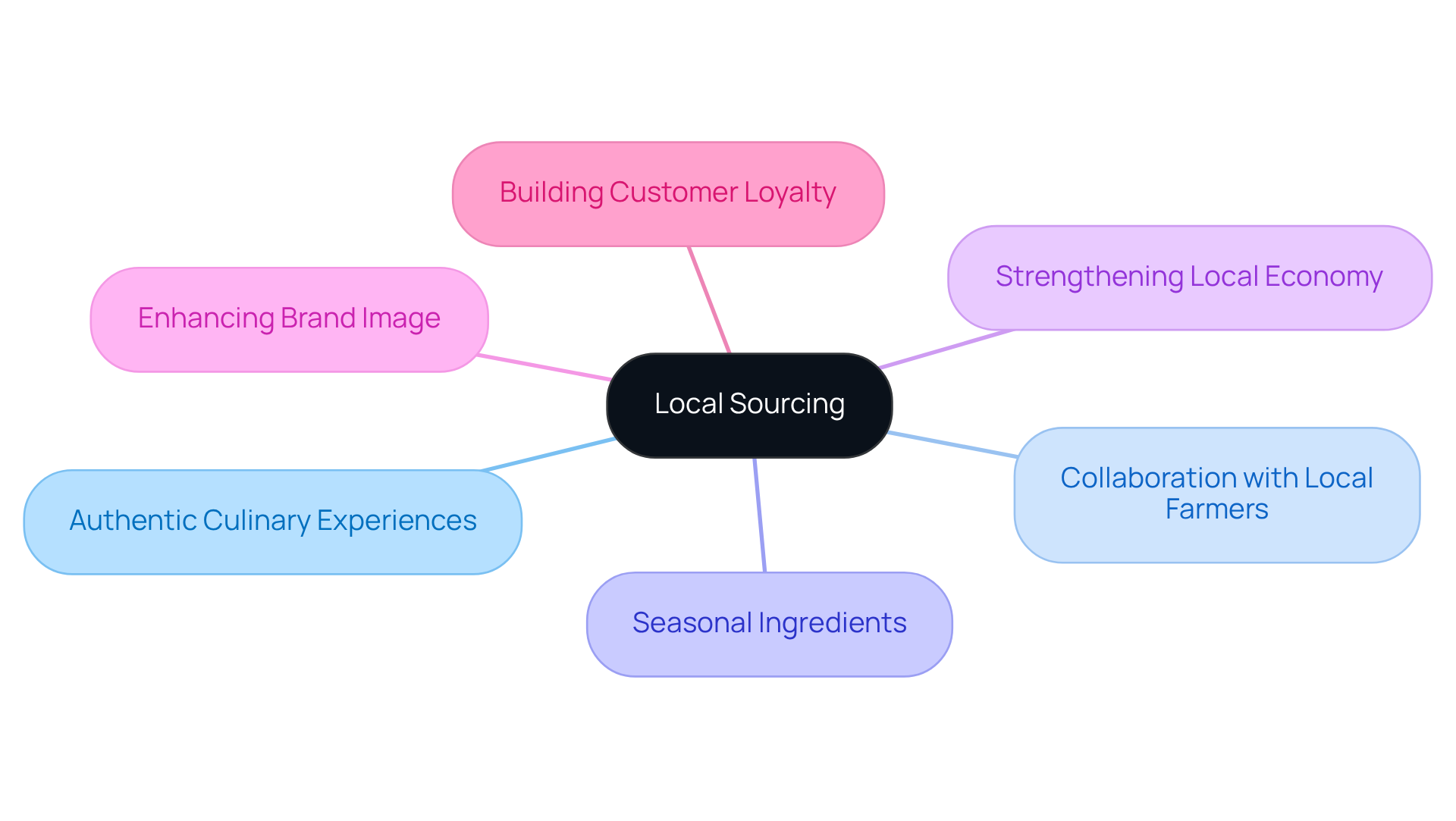
The surge in food delivery services has fundamentally reshaped dining habits, with a significant number of consumers now favoring takeout and delivery over traditional dining experiences. To thrive in this evolving landscape, businesses in food and beverage hospitality must embrace this shift by implementing convenient and . This involves not only partnering with established delivery platforms but also optimizing menus specifically for takeout. By concentrating on items that transport effectively and preserving quality during delivery, restaurants can improve client satisfaction.
Effective marketing of these services is crucial, as it allows establishments to connect with a wider audience and tap into new revenue streams. Furthermore, harmonizing brand voice across all marketing channels is vital for creating a unified experience for clients. As consumer preferences continue to evolve, the ability to adapt to the demand for takeout and delivery will be essential for maintaining competitiveness in the food and beverage hospitality sector. In fact, the food delivery services market is projected to reach nearly $333.54 billion by 2032, highlighting the immense potential for growth in this area. By aligning their strategies with these trends and implementing specific tactics to enhance client loyalty, hospitality enterprises can not only meet client expectations but also significantly boost their financial performance.
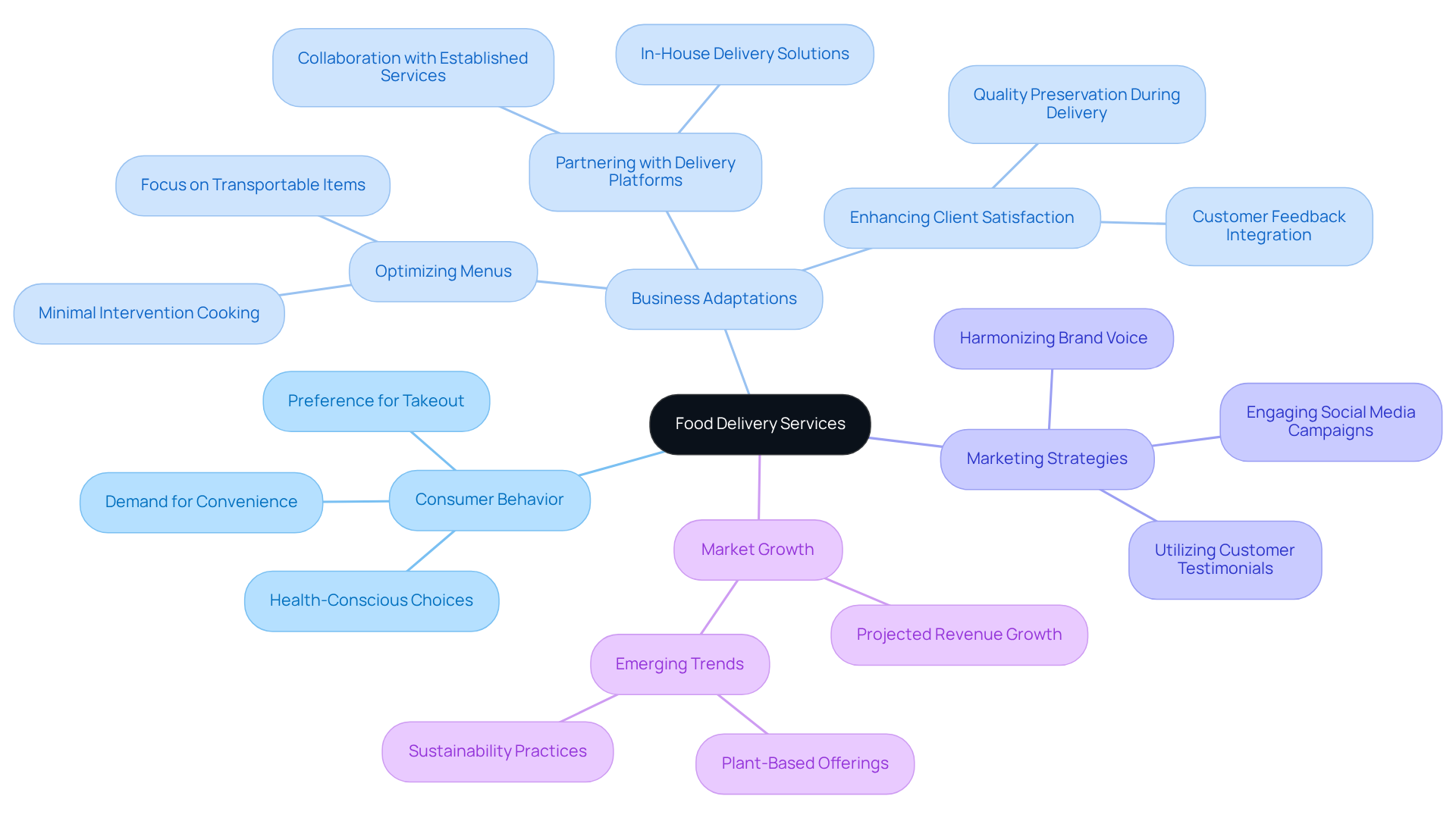
Social media has emerged as an essential component in engaging clients and marketing hospitality enterprises. Platforms like Instagram and Facebook empower businesses to showcase their offerings, share client experiences, and cultivate a community around their brand. With 80 percent of Instagram users following at least one brand, the potential for visibility is substantial, resulting in a 2.2 percent interaction rate per follower. By creating visually appealing content and actively engaging with followers, companies can significantly enhance their online presence and attract new clients.
Effective social media strategies not only foster brand loyalty but also encourage client retention. For instance, tweets accompanied by images receive 18 percent more clicks, 89 percent more favorites, and 150 percent more retweets, underscoring the importance of visual content in capturing audience attention. Moreover, 72 percent of clients have turned to Facebook for dining decisions, with over 50 million small and medium-sized enterprises (SMEs) leveraging Facebook Pages to connect with their clients, illustrating the platform's profound influence on consumer behavior.
Expert insights further underscore the critical role of social media in hospitality marketing. Richard Branson emphasizes that social media is vital for companies to participate in societal discussions, while Amy Jo Martin asserts that while content is king, interaction is queen in the social media landscape.
Case studies exemplify the efficacy of these strategies. For example, restaurants that incorporate images into their social media posts can anticipate higher engagement, with research indicating that a half-star improvement on Yelp can boost the likelihood of selling out seats during peak hours by 30 to 49 percent. Additionally, the impact of online reviews on restaurant revenue highlights the essential nature of maintaining a positive online reputation.
Looking ahead to 2025, for restaurants will depend on harnessing digital platforms to forge authentic connections with customers, ultimately enhancing brand visibility and driving revenue growth. A key takeaway for companies is to prioritize visual content and actively engage with their audience to maximize their social media impact.
Diversity and inclusivity are increasingly vital in menu design as hospitality businesses strive to cater to a varied audience. This approach involves offering a wide range of options that reflect diverse cultural backgrounds, , and preferences. By creating inclusive menus, establishments can not only attract a wider clientele but also significantly enhance the overall dining experience.
Furthermore, effective marketing of these diverse offerings is crucial, as it can strengthen brand loyalty and elevate client satisfaction. In 2025, statistics indicate that restaurants prioritizing inclusivity in their menu design are likely to experience a notable increase in patronage, as consumers increasingly seek dining experiences that resonate with their values and dietary needs.
Catering to varied audiences through thoughtful menu planning not only meets customer expectations but also positions businesses as leaders in a competitive market.

The landscape of food and beverage hospitality is on the brink of significant transformation by 2025, driven by evolving consumer preferences and innovative strategies. Establishments must adapt to these changes by embracing trends that prioritize health, sustainability, technology, and inclusivity. Recognizing the importance of plant-based dining, sustainable sourcing, and tech-driven experiences will enable the industry to meet the demands of a more health-conscious and environmentally aware clientele.
Key insights from the article underscore the necessity for hospitality businesses to:
The emphasis on local sourcing, health and wellness, and diverse menu offerings reflects a broader commitment to catering to varied consumer needs while fostering loyalty and brand reputation. As the market continues to evolve, adapting to food delivery trends and leveraging social media for engagement will be crucial for success.
Ultimately, the future of food and beverage hospitality transcends merely serving meals; it revolves around crafting experiences that resonate with consumers' values and preferences. By proactively embracing these trends and implementing targeted marketing strategies, businesses can not only thrive in a competitive environment but also contribute to a more sustainable and inclusive culinary landscape.
What is Lights On and what services do they offer in the food and beverage hospitality industry?
Lights On is a strategic revenue management partner that helps food and beverage establishments optimize pricing strategies and enhance occupancy rates. Their services include pricing optimization, market analysis, and off-loading repetitive tasks, allowing clients to focus on high-level strategy.
How does Lights On help improve profitability in hospitality businesses?
By leveraging data analytics and market insights, Lights On enables hospitality businesses to navigate the complexities of revenue management, leading to increased profitability and enhanced guest experiences.
What are the trends in plant-based dining according to the article?
The article indicates that by 2025, nearly 53% of U.S. patrons will seek plant-based options when dining out. By 2030, 75% of consumers expect plant-based food to be widely available in restaurants, with plant-based cuisine becoming a standard offering by 2035.
How are restaurants responding to the demand for plant-based options?
Restaurants and hotels are increasingly incorporating plant-based dishes into their menus to engage a wider audience. U.S. National Parks plan to showcase 50% plant-based menus by 2026, and plant-based meat burgers are expected to surpass veggie burgers in popularity by 2025.
What marketing strategies can food and beverage businesses use to promote plant-based offerings?
Businesses should adopt targeted marketing strategies that highlight their plant-based offerings, utilizing social media and influencer partnerships. Collaborations with reputable brands and time-sensitive promotions can also stimulate trial and innovation.
What is the significance of sustainable sourcing in the dining industry?
Sustainable sourcing is crucial for consumers, with 78% of diners favoring restaurants that prioritize locally sourced ingredients by 2025. This practice not only reduces carbon footprints but also strengthens local economies and enhances brand reputation.
How can Lights On assist restaurants with sustainable sourcing and marketing?
Lights On can help restaurants maximize their reach through both paid and free exposure, ensuring a unified brand voice across digital assets and improving advertising quality to gain a competitive edge.
What impact does sustainable sourcing have on restaurant sales?
Restaurants implementing sustainable sourcing practices can see a positive impact on sales, with studies suggesting that eco-friendly initiatives can drive revenue growth by 5-9%.
Transform your group booking strategies with Lights On and watch your occupancy soar.